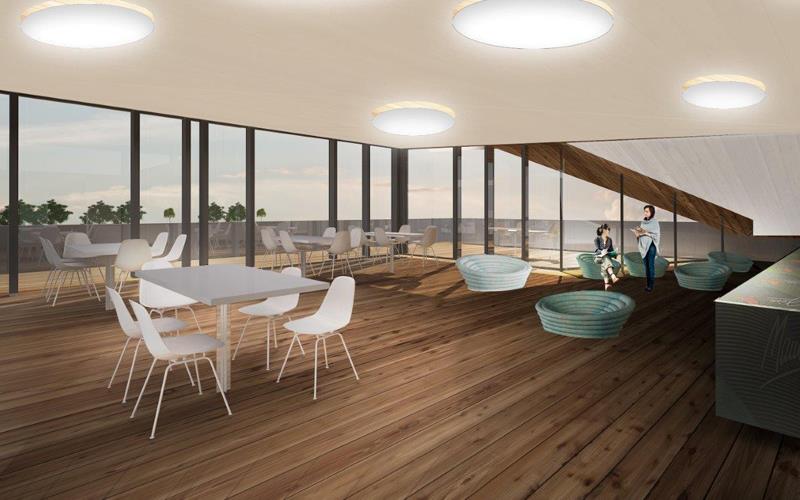Maui Jim is proud of its private ownership, independence and its ‘ohana’ spirit but that does not mean it does not want to grow into an industry giant.
Prescription sunglass sales in Europe are soaring and for the company that brought the first branded prescription sunglasses to the market in 2005 that is good news. Maui Jim is known for its polarised, colour enhancing lenses and its decision to offer those same benefits with a prescription has proved a success.
Maui Jim’s prescription glazing has all been carried out in Peoria, Illinois, but that has not stopped Maui making big in-roads into the European market. The share of its products produced with prescriptions for readers or sunglasses is just over 25% says vice-president of Europe Hans Penzek. He says Maui has been able to live up to ohana – doing the right thing – by offering sunglasses on 6 and 8 base, decompensating and allowing users to build their own sunwear. This has ensured they got the same experience with prescription products as they did with plano.

Take up in Europe has been impressive with prescription products in Sweden and the Nordics making up 50.3% of sales. In Germany it is 24.5%, the UK 26.3% and France, suffering from changes to health insurance replacement values, 23.3%. But the firm is convinced there is much further to go in those countries and areas such as Spain (7.6%) and Italy (10%). ‘I would say we are still the leader,’ says Penzek (pictured left), ‘the Rx business still has a huge potential.’
The decision for the management team of the US-based company under founder Walter Hester was how to grow. Penzek says a move into new channels such as sports, marine or kids’ sunglasses was considered. Six years ago Maui Jim bought Zeal optics to make a move into adventure sports.
‘Walter Hester has decided to step up to the next level so has decided to become an eyewear brand.’ The soft launch of that has seen prescription manufacturing of clear lenses alongside sunwear in the US for the home market, Canada and Europe – including 30 accounts in the UK. He says feedback has been positive but the potential growth throws up another question for the Maui Jim management.
‘The move to clear Rx and rimless means that we will get a lot more work in Peoria,’ says Penzek. The plant works a three shift pattern but on five days a week. ‘Walter doesn’t want his workforce to have to work weekends. ‘The 2,500sqm lab will reach capacity in the middle of next year. The options were to extend Peoria, build elsewhere in the US or elsewhere in the world. Peoria has been affected by tornados so another site was seen as a good option, as was being close to growing markets. The decision was made to place the lab in Braunschweig, Germany, at the company’s distribution centre. With a quarter of European product needing prescription it makes sense, says Penzek.

The new lab (see the artist's impression above) has started construction and will mirror the 2,500sqm footprint of the US plant but will not move to three shift working with the 100 people Peoria has straight away. Penzek is clearly excited about the lab. Equipment will be installed during the summer with test production starting in the Autumn. Production should start later this year or early next. He says he looks forward to inviting accounts to see the facility. The immediate benefit will be reduced delivery times. European customer generally have a five-day turnaround with 1.5 days in the lab and the rest shipping and this should reduce.
He hopes having a second lab in Braunschweig will give Maui Jim much more flexibility and will act as a production centre for emerging markets in India, China and the Middle East.

The decision for Maui Jim has come at a momentous time for international trade and industry activity. On the merger of Essilor and Luxottica Pensek says the effects of the merger were discussed but he says the loyalty Maui Jim has built up will see it through. ‘We have been with our accounts for many years and we have always been honest with them and that creates a lot of loyalty. I wouldn’t expect there to be problems.’ He says other companies will always be taking action for whatever reason but Maui Jim has to carry on doing what its customers want.
On the Trump question and the issue of offshoring production he says the change of administration has not changed the company’s plans. ‘The customers come first for Maui Jim and Donald Trump second.’
Making a massive investment in prescription manufacturing means continuing to support eye care practices in selling prescription sunglasses is not an option, says Maui Jim’s international marketing manager Martijn van Eerde.
He says the potential in the prescription sunwear market is just beginning to be realised and by supporting practices further growth will come.
Much of Maui Jim’s work with eyecare professionals has been around guiding opticians towards a more strategic approach to retailing. This means tackling the tricky task of squaring the circle between the medical and retail elements of the end users’ eyewear journey.
‘It’s about the untapped need in the market,’ he says describing the path to market as a spectrum of experiences ranging from the welcome through the medical and then on to a retail transaction.
At the start of the journey the patient is with an optometrist undergoing a medical examination. ‘They are open to suggestion at the beginning, they are like a sponge,’ says van Eerde, as they soak up all of the information passed on. Once out in the dispensing area the mood changes and they become a customer who closes up when they feel they are being sold to.
Maui Jim has been working with practices to convince them that talking about lifestyle, driving in low sun, outdoor activities and other situations where the benefits of prescription sunwear are likely to be felt, should take place during the eye examination. ‘Once someone has paid several hundred euros for a beautiful piece of eyewear it becomes very difficult to then start talking about a second pair.
‘We take the approach that you sell the second pair first. The second pair should be talked about in the medical consultation when the patient is still in the white coat part. We are convinced that this approach works.’
In reality convincing optical practice owners is not so easy. ‘We can tell opticians what we believe works but most opticians won’t accept that. It’s their store and they want to dictate.’ He says by carefully monitoring which products practices take, which practices are willing to try product out, noting those who will take part in training and accept advice he hopes to demonstrate that his approach breeds success.
One mechanism Maui Jim employed was to ask customers to agree to stock the 40 pieces that Maui Jim said would sell in their particular store. The top eight stores saw an increase in sales of up to 50%. ‘This stuff just works. We will continue to develop this but it is all there for people who are willing to play the game.’
The key to having product selected for you is that the supplier knows what sells, says van Eerde. Maui Jim monitored not just what sold in volume, as selected by the opticians. It monitored stock velocity, the number of pieces divided by the number of doors it is sold through.
When opticians choose the product it creates a self-fulfilling prophecy where the most popular pieces chosen become the highest volume pieces. Opticians often ask which is the highest volume piece as their criteria for selection. Stock velocity is a better measure of what is actually selling in store, says van Eerde.
He uses an example of a store where the management chose the 40 Maui Jim sunglass styles its stores could carry. It included the lowest selling model in Maui Jim’s range of several hundred. ‘Some styles just won’t get through the filter of the retailer.’

Research from GfK shows the main drivers for what the end user buys is what they see. When asked why they had selected a particular model the top answers were that it was on the wall, in the window or recommended to them. If they cannot see it, they cannot choose it.
Maui Jim has also invested a lot of time in maintaining the value of its product, says van Eerde. It encourages practices to avoid discounting, pursues cut price online retailers and invests in training for its sales staff and the practices it works with.
Being privately owned allows Maui Jim to retain control of its brand and maintain its value. This has enabled the company to become the third biggest sunglass brand, he says.
Stockists will see some innovative retail ideas coming forward and he urges practices to take part in them.
‘We are going to come up with some very targeted advice and we are going to take that to the retailers,’ he says. But he also wants to challenges practices. ‘What do you want on your wall? Something you like or something that makes you money?’
